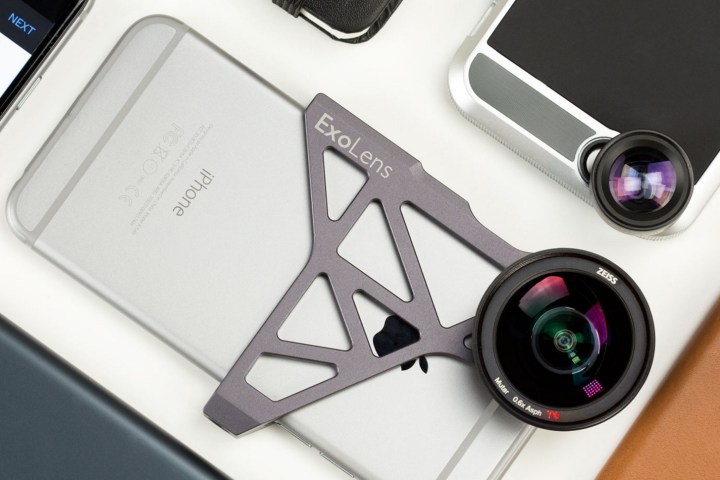
Pro and Prime, which ExoLens is calling the two distinct lens accessory lines, will be aimed at different markets, with — you guessed it — the Pro line geared toward more professional users and the prime line aimed at more average phone users. “We are very excited to launch the high-performance ranges of Pro and Prime iPhone lenses,” said John Fellowes, Chief Executive Officer of Fellowes Brands, which acquired ExoLens in 2014. “The new product lines signify an expanded brand strategy for ExoLens, which will now reach mobile photographers of all levels.”
ExoLens said the first of its lenses to hit the market will be the Pro Wide-Angle and Telephoto kits for iPhone 7, both of which feature aspherical lens technology that you normally only see used in lenses developed for use on DSLR cameras. The Pro kits will also come with the ExoLens Edge Mount, made out of machined aluminum, for mounting the lenses to your iPhone 7.
The wide-angle Pro kit will be the first to market and will retail for around $199, followed by the Telephoto kit which will retail for around $249. For now, ExoLens has not said what the Prime lens line will look like, but the company is slated for a first-quarter 2017 launch.
For more information about ExoLens and its available line of phone accessory lenses, you can take a look over on their website, here.
Editors' Recommendations
- Nomad’s new iPhone case and Apple Watch band may be its coolest yet
- iPhone 16: news, rumored price, release date, and more
- iPhone SE 4: news, rumored price, release date, and more
- Here’s how Apple could change your iPhone forever
- There’s a big problem with the iPhone’s Photos app


